- Home
- Kathy Reichs
Death Du Jour Page 3
Death Du Jour Read online
Page 3
Fear has a redeeming quality. It drives away fatigue. Tired as I was, I stayed alert, teeth clenched, neck craned, muscles rigid. The Eastern Townships Autoroute was a bit better than the back roads, but not much. Lac Memphrémagog to Montreal is normally a two-hour drive. It took me almost four.
* * *
Shortly after ten, I stood in the dark of my apartment, exhausted, glad to be home. Quebec home. I’d been away in North Carolina almost two months. Bienvenue. My thought process had already shifted to French.
I turned up the heat and checked the refrigerator. Bleak. I micro-zapped a frozen burrito and washed it down with room temperature root beer. Not haute cuisine, but filling.
The luggage I’d dropped off Tuesday night sat unopened in the bedroom. I didn’t consider unpacking. Tomorrow. I fell into bed, planning to sleep at least nine hours. The phone woke me in less than four.
“Oui, yes,” I mumbled, the linguistic transition now in limbo.
“Temperance. It is Pierre LaManche. I am very sorry to disturb you at this hour.”
I waited. In the seven years I’d worked for him, the lab director had never called me at three in the morning.
“I hope things went well at Lac Memphrémagog.” He cleared his throat. “I have just had a call from the coroner’s office. There is a house fire in St-Jovite. The firefighters are still trying to get it under control. The arson investigators will go in first thing in the morning, and the coroner wants us there.” Again the throat. “A neighbor says the residents are at home. Their cars are in the driveway.”
“Why do you need me?” I asked in English.
“Apparently the fire is extremely intense. If there are bodies, they will be badly burned. Perhaps reduced to calcined bone and teeth. It could be a difficult recovery.”
Damn. Not tomorrow.
“What time?”
“I will come for you at six A.M.?”
“O.K.”
“Temperance. It could be a bad one. There were children living there.”
I set the alarm for five-thirty.
Bienvenue.
I HAVE LIVED IN THE SOUTH ALL OF MY ADULT LIFE. IT can never be too hot for me. I love the beach in August, sundresses, ceiling fans, the smell of children’s sweaty hair, the sound of bugs at window screens. Yet I spend my summers and school breaks in Quebec. Most months during the academic year, I fly from Charlotte, North Carolina, where I am on the anthropology faculty at the university, to work at the medicolegal lab in Montreal. This is a distance of approximately twelve hundred miles. Due north.
When it is deep winter, I often have a talk with myself before deplaning. It will be cold, I remind myself. It will be very cold. But you will dress for it and be ready. Yes. I will be ready. I never am. It’s always a shock to leave the terminal and take that first, startling breath.
At 6 A.M., on the tenth day of March, the thermometer on my patio read two degrees Fahrenheit. Seventeen below, Celsius. I was wearing everything I possibly could. Long underwear, jeans, double sweaters, hiking boots, and woolen socks. Inside the socks, I had sparkly insulated liners designed to keep astronaut feet toasty on Pluto. Same provocative combo as the day before. I’d probably stay just as warm.
When LaManche honked, I zipped my parka, pulled on gloves and ski hat, and bolted from the lobby. Unenthused as I was for the day’s outing, I didn’t want to keep him waiting. And I was extremely overheated.
I had expected a dark sedan, but he waved at me from what would probably be called a sport utility vehicle. Four-wheel drive, bright red, with racing stripes.
“Nice car,” I said as I climbed in.
“Merci.” He gestured to a center rack. It held two Styrofoam cups and a Dunkin’ Donuts bag. Bless you. I chose an apple crunch.
On the drive to St-Jovite, LaManche related what he knew. It went little beyond what I’d heard at 3 A.M. From across the road a neighbor couple saw occupants enter the residence at nine in the evening. The neighbors left after that and visited friends some distance away, where they stayed late. When they were returning around two they noted a glow from down the road, and then flames shooting from the house. Another neighbor thought she’d heard booming sounds sometime after midnight, wasn’t sure, and went back to sleep. The area is remote and sparsely populated. The volunteer fire brigade arrived at two-thirty, and called in help when they saw what they had to deal with. It took two squads over three hours to put out the flames. LaManche had talked to the coroner again at five forty-five. Two deaths were confirmed, others anticipated. Some areas were still too hot, or too dangerous, to search. Arson was suspected.
We drove north in the predawn darkness, into the foothills of the Laurentian Mountains. LaManche talked little, which was fine with me. I am not a morning person. He is an audio junkie, however, and kept an unbroken succession of cassettes playing. Classics, pop, even C&W, all converted to easy listenin’. Perhaps it was meant to calm, like the numbing music piped to elevators and waiting rooms. It made me jittery.
“How far is St-Jovite?” I picked a double-chocolate honey-glazed.
“It will take us about two hours. St-Jovite is about twenty-five kilometers this side of Mont Tremblant. Have you skied there?” He wore a knee-length parka, army green with a fur-lined hood. From the side, all I could see was the tip of his nose.
“Um. Beautiful.”
I nearly got frostbite on Mont Tremblant. It was the first time I’d skied in Quebec, and I was dressed for the Blue Ridge Mountains. The wind at the summit was cold enough to freeze liquid hydrogen.
“How did things go at Lac Memphrémagog?”
“The grave wasn’t where we expected, but, what’s new? Apparently she was exhumed and reburied in 1911. Odd that there was no record of it.” Very odd, I thought, taking a sip of tepid coffee. Instrumental Springsteen. “Born in the U.S.A.” I tried to block it. “Anyway, we found her. The remains will be delivered to the lab today.”
“It is too bad about this fire. I know you were counting on a free week to concentrate on that analysis.”
In Quebec, winters can be slow for the forensic anthropologist. The temperature rarely rises above freezing. The rivers and lakes ice over, the ground turns rock hard, and snow buries everything. Bugs disappear, and many scavengers go underground. The result: Corpses do not putrefy in the great outdoors. Floaters are not pulled from the St. Lawrence. People, too, burrow in. Hunters, hikers, and picnickers quit roaming the woods and fields, and some of last season’s dead are not found until the spring melt. The cases that are assigned to me, the faceless in need of a name, decline in number between November and April.
The exception is house fires. During the cold months, these increase. Most burned bodies go to the odontologist and are identified by dental records. The address and its occupant are generally known, so antemortem files can be pulled for comparison. It is when charred strangers turn up that my help may be requested.
Or in difficult recovery situations. LaManche was right. I’d been counting on an open agenda, and did not appreciate having to go to St-Jovite.
“Maybe I won’t be involved in the analysis.” A million and one strings began “I’m Sitting on Top of the World.” “They’ll probably have records on the family.”
“Probably.”
We arrived in St-Jovite in less than two hours. The sun had risen and was painting the town and countryside in icy, dawn tones. We turned west onto a winding two-lane. Almost immediately two flatbeds passed us, heading in the opposite direction. One carried a battered gray Honda, the other a red Plymouth Voyager.
“I see they have impounded the cars,” said LaManche.
I watched the vehicles disappear in the side mirror. The van had infant carriers in the backseat and a yellow smiley face on the rear bumper. I pictured a child in the window, tongue out, fingers in ears, mugging at the world. Googly eyes, my sister and I had called it. Perhaps that child lay charred beyond recognition in an upstairs room ahead.
Within minutes we s
aw what we were looking for. Police cruisers, fire engines, utility trucks, mobile press units, ambulances, and unmarked cars lined the road and flowed up either side of a long, gravel driveway.
Reporters stood in clusters, some talking, some adjusting equipment. Others sat in cars, keeping warm while waiting out the story. Thanks to the cold and the early hour, there were surprisingly few sightseers. Now and then a car passed, then returned slowly for a second sweep. Round-trip gawkers. Later, there would be many more.
LaManche signaled a turn and angled onto the drive, where a uniformed officer waved us to a stop. He wore an olive green jacket with black fur collar, dark olive muffler, and olive hat, earflaps tied in the up position. His ears and nose were raspberry red, and when he spoke, a cloud of vapor billowed from his mouth. I wanted to tell him to cover his ears, immediately felt like my mother, and didn’t. He’s a big boy. If his lobes crack off, he’ll deal with it.
LaManche showed ID, and the guard waved us in, indicating we should park behind the blue crime scene recovery truck. SECTION D’IDENTITÉ JUDICIAIRE it said in bold black letters. The Crime Scene Recovery unit was already here. The arson boys, too, I suspected.
LaManche and I tugged on hats and gloves and got out. The sky was azure now, the sunlight dazzling off last night’s snow. The air was so frigid it felt crystalline and made everything look sharp and clear. Cars, buildings, trees, and utility poles cast dark shadows on the snowy ground, clean-edged, like images on high-contrast film.
I looked around. The blackened remains of a house, as well as an intact garage and a smaller outbuilding of some sort clustered at the head of the drive, all done in cheap Alpine style. Footpaths formed a triangle in the snow, linking the three buildings. Pines circled what was left of the house, their branches so laden with snow that the tips bowed downward. I watched a squirrel scamper along a limb, then retreat to the safety of the trunk. In its wake, clumps of snow cascaded down, pockmarking the white below.
The house had a high-pitched roof of red-orange tile, partially standing but darkened now and coated in ice. That portion of the exterior surface which had not burned was covered in cream-colored siding. The windows gaped black and empty, the glass shattered, the turquoise trim burned or darkened with soot.
The left half of the house was charred, its rear largely destroyed. On the far side I could see blackened timbers where roof and walls had once met. Wisps of smoke still rose from somewhere in the back.
The front was less badly damaged. A wooden porch ran its length, and small balconies jutted from upstairs windows. The porch and balconies were constructed of pink pickets, round at the top, with heart-shaped cutouts at regular intervals.
I looked behind me, down the drive. Across the road sat a similar chalet, this one trimmed in red and blue. A man and woman stood in front, arms folded, mittened hands tucked under armpits. They watched silently, squinting into the morning glare, their faces grim below identical orange hunting caps. The neighbors who had reported the fire. I scanned the road. There were no other homes within visual distance. Whoever thought she had heard muffled booms must have good ears.
LaManche and I started toward the house. We passed dozens of firefighters, colorful in their yellow suits, red hard hats, blue utility belts, and black rubber boots. Some wore oxygen tanks strapped to their backs. Most seemed to be gathering equipment.
We approached a uniformed officer standing by the porch. Like the driveway guard, he was Sûreté du Québec, probably from a post in St-Jovite or a nearby town. The SQ, or Quebec Provincial Police, have jurisdiction everywhere off the island of Montreal, except in towns that maintain their own police. St-Jovite would be too small for that, so the SQ had been called, maybe by the fire chief, maybe by the neighbor. They, in turn, had called the arson investigators from our lab. Section d’Incendie et Explosif. I wondered who had made the decision to call the coroner. How many victims would we find? In what condition would they be? Not good, I was sure. My heart stepped up its tempo.
Again LaManche held up his badge, and the man inspected it.
“Un instant, Docteur, s’il vous plaît,” he said, holding up a gloved palm. He called to one of the firefighters, said something, and pointed at his head. In seconds we had hard hats and masks. We put on the former, hung the latter over our arms.
“Attention!” said the officer, inclining his head toward the house. Then he stepped aside to let us pass. Oh yes. I’d be careful.
The front door was wide open. When we crossed the threshold out of the sunshine the temperature dropped twenty degrees. The air inside felt damp and smelled of charred wood and soggy plaster and fabric. A dark goo covered every surface.
Straight ahead a staircase rose to a second story, to the left and right gaped what must have been the living and dining rooms. What remained of the kitchen was in back.
I’d been to other fire scenes, but few as devastated as this. Charred boards lay everywhere, like debris hurled against a seawall. They crisscrossed on top of tangled chair and sofa frames, angled against stairs, and trellised against walls and doors. Remnants of household furnishings lay in blackened heaps. Wires dangled from walls and ceilings, and pipes twisted inward from their points of attachment. Window frames, stair rails, boards, everything was edged in black icicle lace.
The house was crawling with people in hard hats, talking, taking measurements, photos, and videos, collecting evidence, and scribbling on clipboards. I recognized two arson investigators from our lab. They held a measuring tape between them and one squatted at a fixed point while the other circled, recording data every few feet.
LaManche spotted a member of the coroner’s staff, and began picking his way forward. I followed, snaking between twisted metal shelving, broken glass, and what looked like a tangled red sleeping bag, its stuffing spewed like charcoal innards.
The coroner was very fat and very flushed. He straightened slightly when he saw us, blew a puff of air, pooched out his lower lip, and gestured an upturned mitten at the devastation around us.
“So, Monsieur Hubert, there are two dead?”
LaManche and Hubert were design opposites, like contrasting shades on a color wheel. The pathologist was tall and rangy, with a long, bloodhound face. The coroner was round in every way. I thought of Hubert in horizontals, LaManche in verticals.
Hubert nodded, and three chins rippled above his muffler. “Upstairs.”
“Others?”
“Not yet, but they haven’t finished in the lower level. The fire was much more intense in the back. They think it probably started in a room off the kitchen. That area burned completely, and the floor collapsed into the basement.”
“Have you seen the bodies?”
“Not yet. I’m waiting for clearance to go upstairs. The fire chief wants to be sure it’s safe.”
I shared the chief’s sentiment.
We stood in silence, surveying the mess. Time passed. I curled and uncurled my fingers and toes, trying to keep them flexible. Eventually three firemen descended. They wore hard hats and goggle masks, and looked as if they’d been rummaging for chemical weapons.
“It’s O.K.,” said the last fireman, unsnapping and removing his mask. “You can go up now. Just watch your step and keep the hard hats on. That whole damn ceiling could come down. But the floors look O.K.” He continued toward the door, then turned back. “They’re in the room on the left.”
Hubert, LaManche, and I worked our way up the stairs, shards of glass and charred rubble crunching under our feet. Already my stomach was tightening and a hollow feeling was building in my chest. Though it is my business, I have never grown immune to the sight of violent death.
At the top a door opened to the left, another to the right, there was a bath straight ahead. Though badly smoke damaged, compared with the downstairs, things seemed to be reasonably intact at this level.
Through the left doorway I could see a chair, a bookcase, and the end of a twin bed. On it was a pair of legs. LaManche and I entered
the left-hand room, Hubert went to check the one on the right.
The back wall was partially burned, and at places two-by-fours were exposed behind the flowered wallpaper. The beams were charcoal black, their surfaces rough and checked, like the skin on a croc. “Alligatored,” the arson boys would write. Charred and frozen debris lay underfoot, and soot covered everything.
LaManche took a long look around, then pulled a tiny Dictaphone from his pocket. He recorded the date, time, and location, and began describing the victims.
The bodies lay on twin beds that formed an L in the far corner of the room, a small table between them. Strangely, both individuals appeared to be fully clothed, though smoke and charring had obscured all indicators of style or gender. The victim along the back wall wore sneakers, the one on the side had died in stocking feet. I noticed that one athletic sock was partly off, exposing a smoke-stained ankle. The tip of the sock hung limply over the toes. Both victims were adult. One appeared more robust than the other.
“Victim number one . . .” continued LaManche.
I forced myself to take a closer look. Victim number one held its forearms high, flexed as if ready to fight. Pugilistic pose. While not long enough or hot enough to consume all the flesh, the fire that raced up the back wall had produced sufficient heat to cook the upper limbs and cause the muscles to contract. Below the elbows the arms were stick-thin. Clumps of scorched tissue clustered along the bones. The hands were blackened stumps.
The face reminded me of Rameses’ mummy. The lips had burned away, exposing teeth with dark and cracked enamel. One incisor was delicately outlined in gold. The nose was burned and squashed, the nostrils pointing upward like the snout of a fruit bat. I could see individual muscle fibers circling the orbits and streaming across the cheekbones and mandible, like a line drawing in an anatomy text. Each socket held a dried and shriveled eyeball. The hair was gone. So was the top of the head.

 Two Nights
Two Nights The Bone Collection: Four Novellas
The Bone Collection: Four Novellas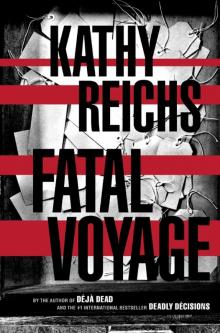 Fatal Voyage
Fatal Voyage 206 Bones
206 Bones Bones to Ashes
Bones to Ashes Terminal
Terminal Monday Mourning
Monday Mourning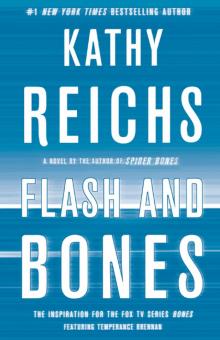 Flash and Bones
Flash and Bones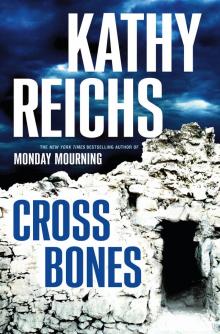 Cross Bones
Cross Bones Devil Bones
Devil Bones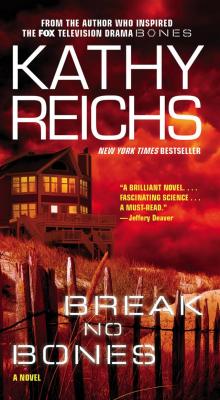 Break No Bones
Break No Bones Swamp Bones
Swamp Bones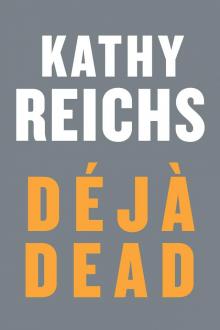 Déjà Dead
Déjà Dead Shock
Shock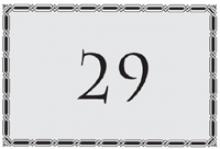 Spider Bones
Spider Bones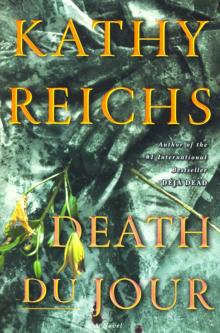 Death Du Jour
Death Du Jour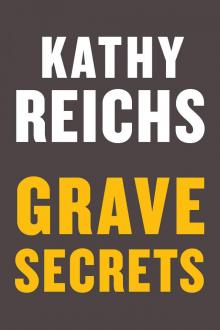 Grave Secrets
Grave Secrets Trace Evidence: A Virals Short Story Collection
Trace Evidence: A Virals Short Story Collection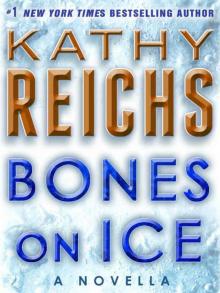 Bones on Ice
Bones on Ice The Bone Code
The Bone Code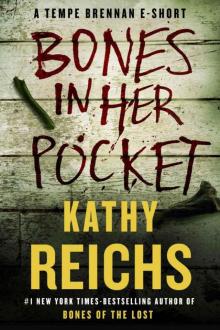 Bones in Her Pocket
Bones in Her Pocket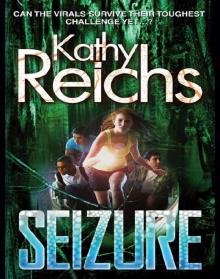 Seizure:
Seizure: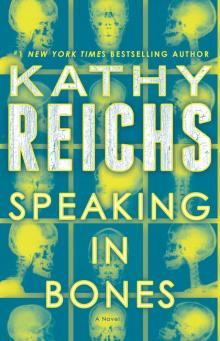 Speaking in Bones
Speaking in Bones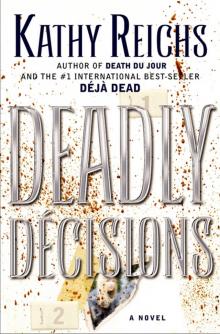 Deadly Decisions
Deadly Decisions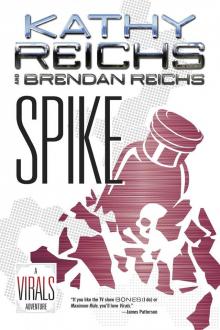 Spike
Spike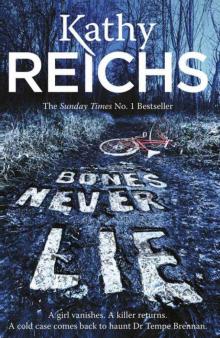 Bones Never Lie
Bones Never Lie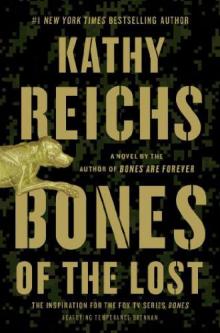 Bones of the Lost
Bones of the Lost Virals 03.5 - Swipe
Virals 03.5 - Swipe Exposure
Exposure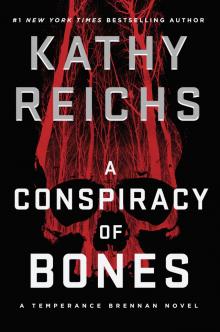 A Conspiracy of Bones
A Conspiracy of Bones Shift (tory brennan)
Shift (tory brennan) Bones of the Lost: A Temperance Brennan Novel tb-16
Bones of the Lost: A Temperance Brennan Novel tb-16 Virals tb-1
Virals tb-1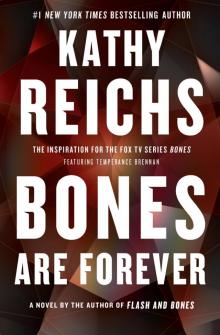 Bones Are Forever tb-15
Bones Are Forever tb-15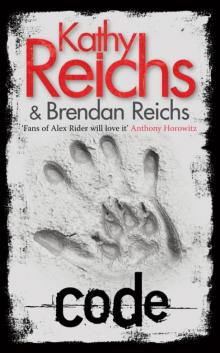 Code tb-3
Code tb-3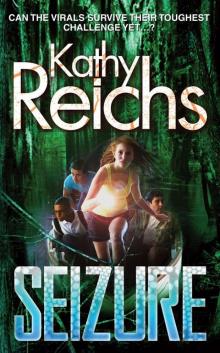 Seizure tb-2
Seizure tb-2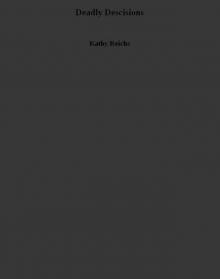 Deadly Descisions
Deadly Descisions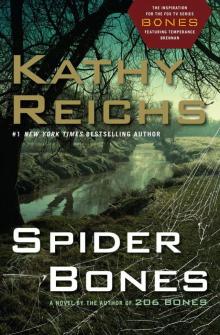 Spider Bones: A Novel
Spider Bones: A Novel